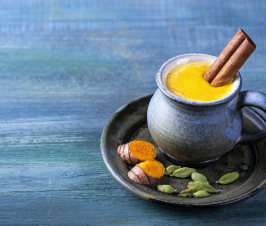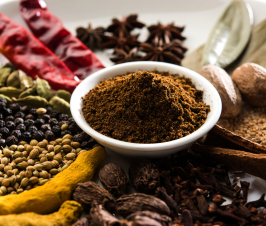Herbs are some of the most amazing creations under the sun. They are full of hundreds of phyto-chemicals that work synergistically to create potent medicines and nutrient-dense foods. Plants have been used medicinally since time immemorial – they have even been found at various archaeological sites dating between 8,000 and 790,000 years ago! They can be used as both medicine and food.
Animals have also been observed eating plants to cure themselves, even though some of the plants have no nutritional value and could be harmful in healthy humans. For example, when in their natural habitat in central Africa, chimpanzees infected with intestinal parasites will swallow leaves with prickly hairs on them which can snag the worms and move them out of the body via a bowel movement. From caterpillars to sheep, ants to apes, animals have an innate knowledge of what substances to ingest to cure what ails them.
In recent years, herbal medicine has increased significantly in popularity, creating a glut of products on the shelves with a widely varying degree of quality and efficacy. Often, but not always, formulas with lots of different herbs (more than 5 or 6), don’t have enough of each one to actually be therapeutic. This is especially true of formulas that have vitamins, minerals and herbs. Tablets commonly contain binders that can make them hard to digest and access the ingredients, especially for folks with gastrointestinal issues. If digestive issues are present for you, I suggest looking for products in tincture (liquid), tea, or powder form.
“Standardized extract” is a term that means certain chemical compounds have been identified in a plant (such as Silymarin in Milk Thistle). The manufacturer then pulls out that compound and creates a product with much higher amounts, seemingly to make a more effective product. However, when we look at the wisdom of Nature, we see that She has put hundreds of phytochemicals into each plant, creating a “whole is greater than the sum of its parts” type scenario. When we simply extract “the active ingredient”, we are defying the inherent intelligence that went into creating the whole plant. We are also putting ourselves at risk of more side effects. For example, salicylic acid is the primary ingredient in aspirin, and it originally was found and used in plants such as willow bark and poplar. We know that overuse of aspirin can be related to the development of bleeding and ulcers. However, we do not see these side effects when we use the whole plant. Ancient Ayurvedic texts suggest heating herbs in ghee (clarified butter made from the milk of a buffalo or cow) before preparing the rest of the meal. Modern research suggests that this makes more of the medicinal qualities of herbs like turmeric more bioavailable and more potent than when we take them in capsule or liquid form.
Knowing how to select the herbal product that is right for you is imperative to finding an option that might assist you and your health. Consulting with a Naturopathic Doctor or Herbalist can be helpful to get you started.

Nicola Dehlinger, ND, graduated from SCNM. Dr. Nicola sees clients from around the world in her naturopathic medical practice, Pura Vida Natural Healthcare, in Durango, CO. She is an expert in the treatment of anxiety, depression, and insomnia. She is able to minimize supplements and medications as her patients become empowered to heal themselves. In addition to seeing clients, Dr. Nicola leads group and private retreats. She teaches a variety of online and in-person classes. In her free time, you can find Dr. Nicola in the mountains or the kitchen, enjoying time with her husband, son, and dogs. Website: www.puravidahealthcare.com

















